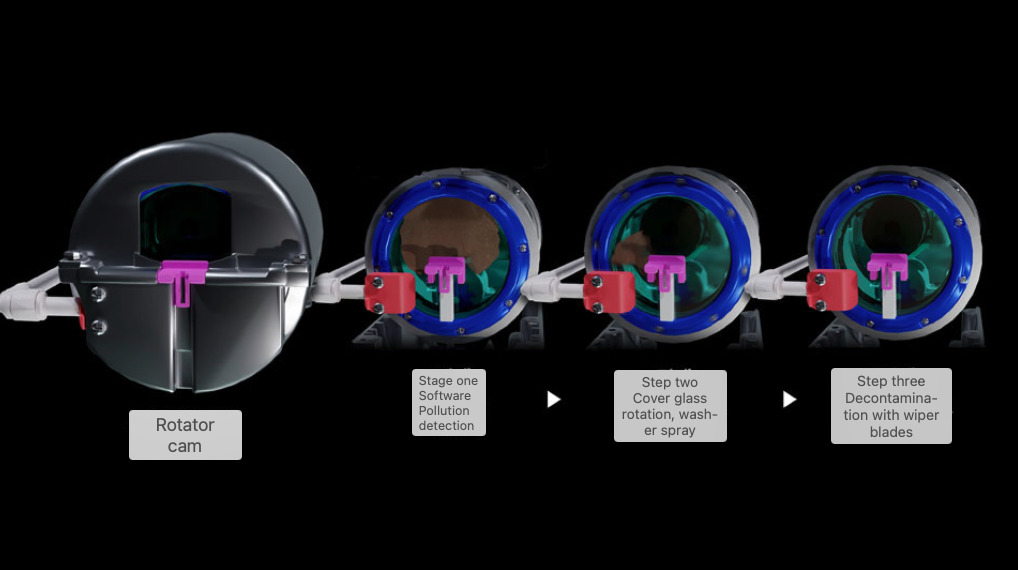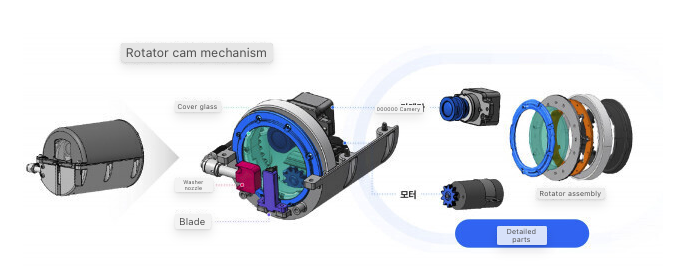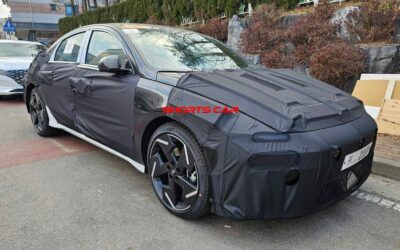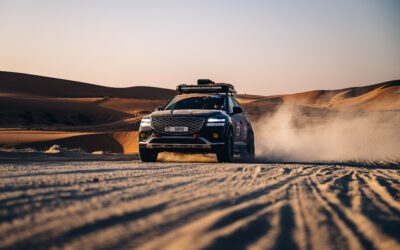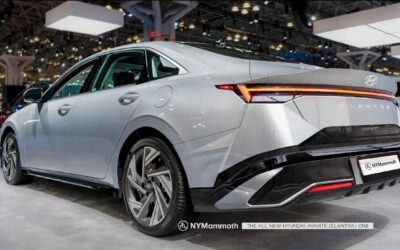Hyundai & Kia announced on the 6th that they have developed the first ‘Rotator-Cam’ technology that removes external pollution by combining the rotation of the cover glass that protects the camera with a small wiper. Autonomous driving, which is considered one of the areas with the fiercest development competition, is becoming technologically advanced incomparably in the past, but there is a possibility that even a small foreign substance on the sensor will cause a fatal error.
This means that in order for the autonomous driving function to work finely, it is important to secure sensor cleaning technology in the first place. Currently the most widely applied camera sensor cleaning technique is to spray the washer fluid through a pop-up nozzle to remove foreign material. However, in case of rain, the disadvantage is that residual washer fluid or accumulated raindrops can clump on the surface of the lens.
The method of physically wiping pollution using an electric wiper blade has excellent performance in removing water droplets in the event of rain, but there is also a limit that the wiper can oblate the field of view of the camera sensor. The Rotator Cam technology unveiled on the day is one of the various sensor cleaning technologies being developed by Hyundai & Kia, with the advantage of being able to effectively remove dust and mud as well as water droplets.
While developing the Rotator Cam, Hyundai & Kia paid attention to the way the cover glass, which is the cover of the camera lens, is rotated. Because of the structural advantage of being able to clean the sensor effectively without obscuring the view. The Rotator Cam consists of an electric motor for rotating the cover glass, a washer fluid supply located at the bottom of the cover glass, and a fixed wiper blade.
First of all, when the image analysis AI detects contamination, the washer fluid supply is automatically activated and the cover glass is rotated. By rotation, the contaminant is filtered into a small wiper, allowing for clear image transmission again. When a rain situation is detected through a lane sensor, it also minimizes the smearing of water droplets by omitting the washing fluid spraying process. Moreover, the rotator cam is designed with an integrated wiper blade and washer nozzle for excellent decontamination performance, preventing the washer fluid from scattering to the outside and optimizing the washer fluid usage.
In particular, while sensor cleaning technology using cover glass has a common problem of moisture inside, rotator cam technology can rotate the cover glass and at the same time wind the inner propeller wing to remove moisture. In fact, if you look at the test driving video released by Hyundai & Kia on this day, you can see that many raindrops on the camera lens are wiped at the same time as the rotator cam operation in the heavy rain, so that a clean view is secured.
If the technology is commercialized, it is expected to contribute to securing the safety of autonomous driving mobility by supporting the sensing advanced technology required for full autonomous driving of level 4 or higher. In addition, it is expected to be able to replace nozzle parts-based cleaning technology, which relies mostly on imports.
Currently, Hyundai Motor and Kia are conducting tests assuming numerous scenarios that can actually occur for careful verification of Rotator Cams. Moreover, it has completed a patent application for RotatorCam technology, and plans to review whether it will be mass-produced after durability and performance tests.
Hyundai & Kia said that sensor cleaning technology is a key factor for advancing autonomous driving technology, and all sectors will continue to work hard to develop various convenience technologies based on future mobility that put customer safety first.

